Best gravel bike pedals: Clipless, power meter and flat options to keep your feet locked in place
We test twelve pairs of the best gravel bike pedals for off-road riding
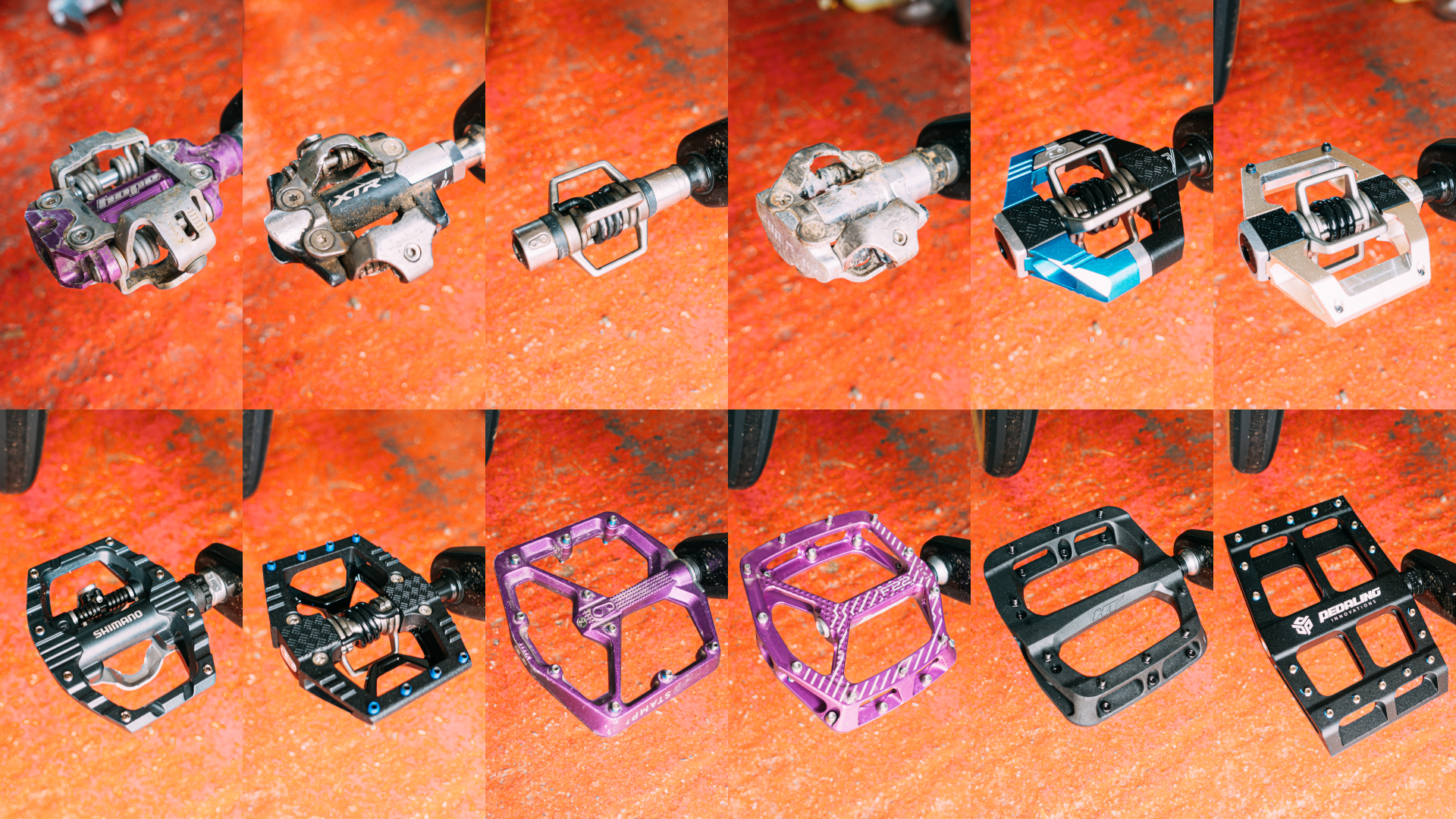
Gravel bikes are a well-established subset of the market, and while gravel tech has well and truly taken on a life of its own, the best gravel bike pedals are still very much mountain bike pedals by any other name.
Why are the best gravel bike pedals all mountain bike pedals? Well, for the most part, it's because at some point you may need to put your feet down and walk, and mountain bike cleats (if you opt for clipless) are recessed making the best gravel bike shoes easier to walk with. Furthermore, while the best gravel bikes can be fitted with road bike pedals, they are much more prone to clogging in the mud - something I can personally attest to after blowing the carbon spring clean out of a pair of Look Keo Blade pedals after a muddy excursion on my road bike.
The default, if such a thing exists, is Shimano's SPD system, though there are other systems available, including Crankbrothers or Hope, as well as plenty of flat pedals if you don't want to clip in.
Until a few years ago, if you wanted a power meter on your gravel bike, you were restricted to crank-based options. But the rise and rise of gravel racing has meant that dual-sided pedal power meters are now among the best power meters available and we've had several options in for review. We've included the main options lower down the page.
If you don't want to clip in then it makes sense to simply use MTB flat pedals, rather than commuter-focused options, as the added grip will keep your feet in the right place over bumpy terrain.
Below I've rounded up my favourite options for mixed terrain riding but if you are unsure what will suit your needs best, there is a how to choose section.
Dual Sided pedals

➕ Lightweight
➕ Reliable
➖ Cheaper versions are more durable
For many of us, Shimano's SPD system is essentially synonymous with "off-road clipless pedals". The cream of the crop is the XTR pedal, from the Japanese giant's top-end MTB groupset. A set isn't as light as a set of Eggbeaters, but it's the lightest SPD system, with silky smooth bearings and a Teflon coating for easier clip-in/out. They are lighter than the more basic M540 and M520 options, but also less durable. That being said, they've been faultless in all the time I've used them, with only second-hand reports of them ever failing.
For more details, read our Shimano XTR M9100 pedal review
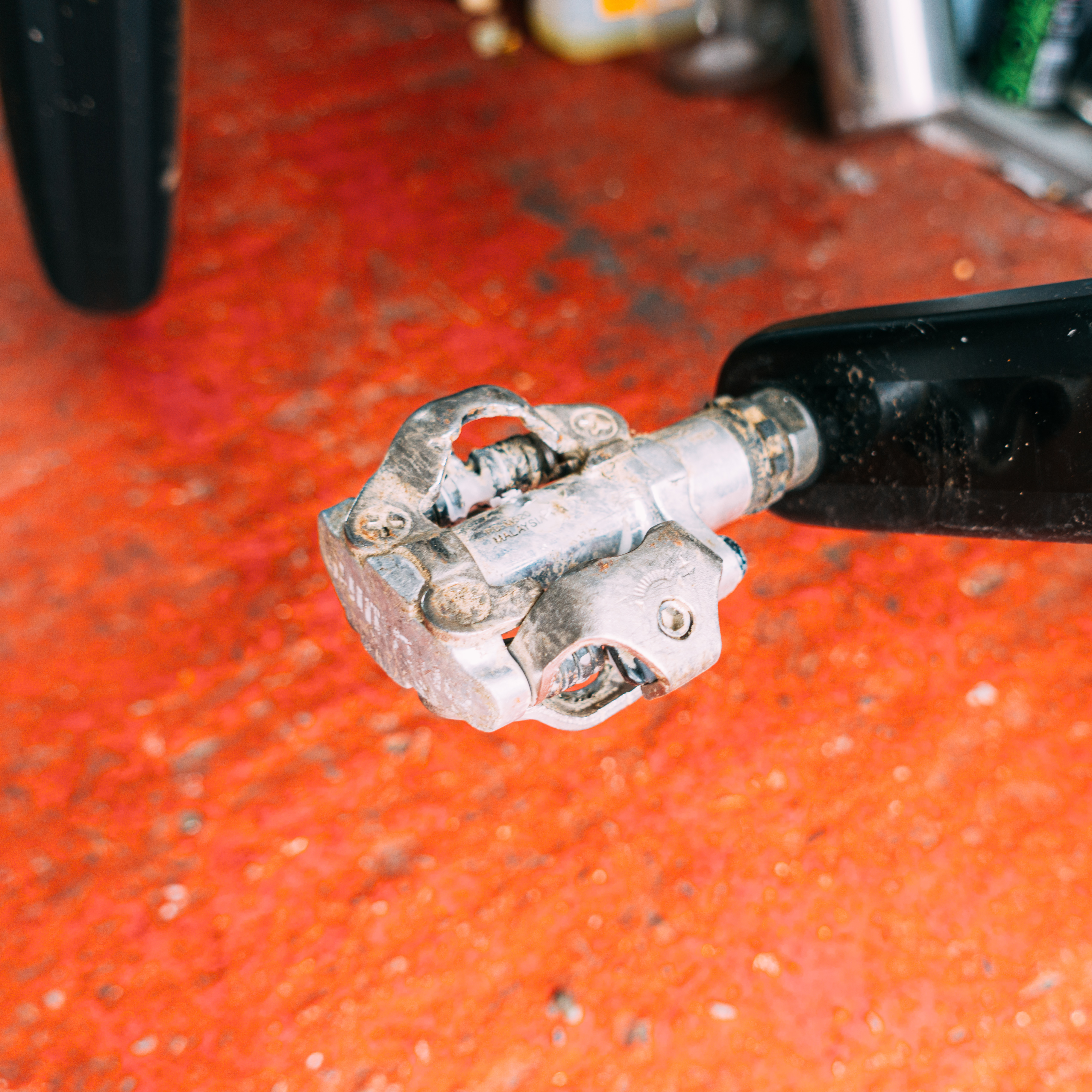
➕ Bombproof
➕ Cheap
➖ A little hefty
➖ Prone to squeaking
The M520 is the most budget SPD pedal from Shimano, and for my money, there's little point opting for the more expensive M540. I've had a set of these since I started racing cyclocross in 2016 and they are still going strong despite never having a service. The bearings are servicable but from my experience, and that of everyone I've ever met who uses these, you won't need to. They are heavier though, and without the Teflon coating of the XTR they are more prone to getting squeaky over time, but it's nothing some wax or a spray of GT85 won't fix.
For more details, read our Shimano M520 pedal review
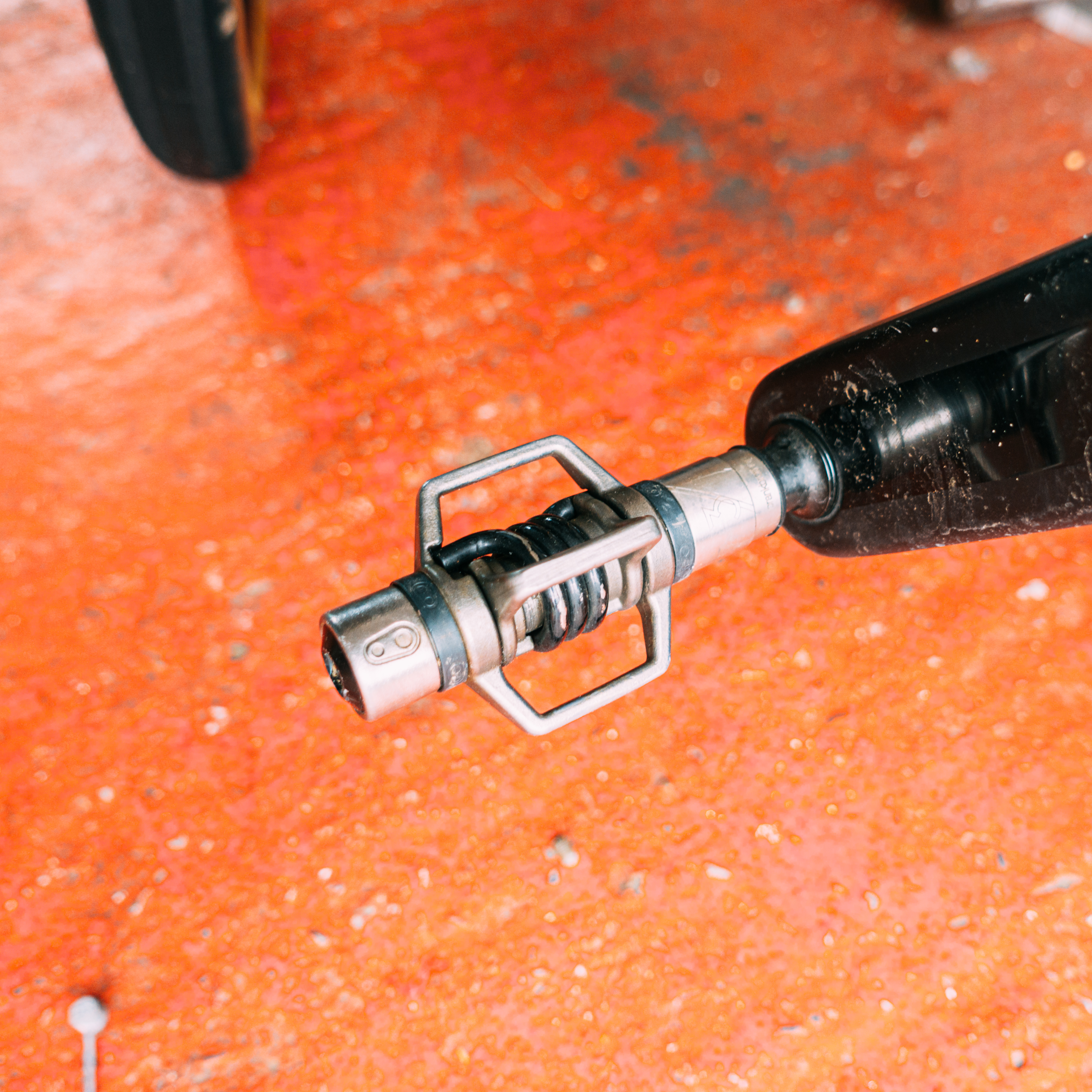
➕ Lightweight
➕ Four-way entry
➕ Great mud clearance
➖ Bearing issues
If you're racing cyclocross, or you want to make your gravel bike as light as possible, then the Eggbeater from Crankbrothers is the pedal for you. It's about as pared back as a pedal can be, eschewing any platform and simply opting for the cleat interface. I never really found it to cause any hot spots from increased pressure, but it certainly feels a little less stable initially. The fact that mud can't jam it up and you can clip in on four sides is a real boon though when racing through the slop. Whichever tier you get just stay on top of bearing services though, as this is the only pedal I've had real issues with.
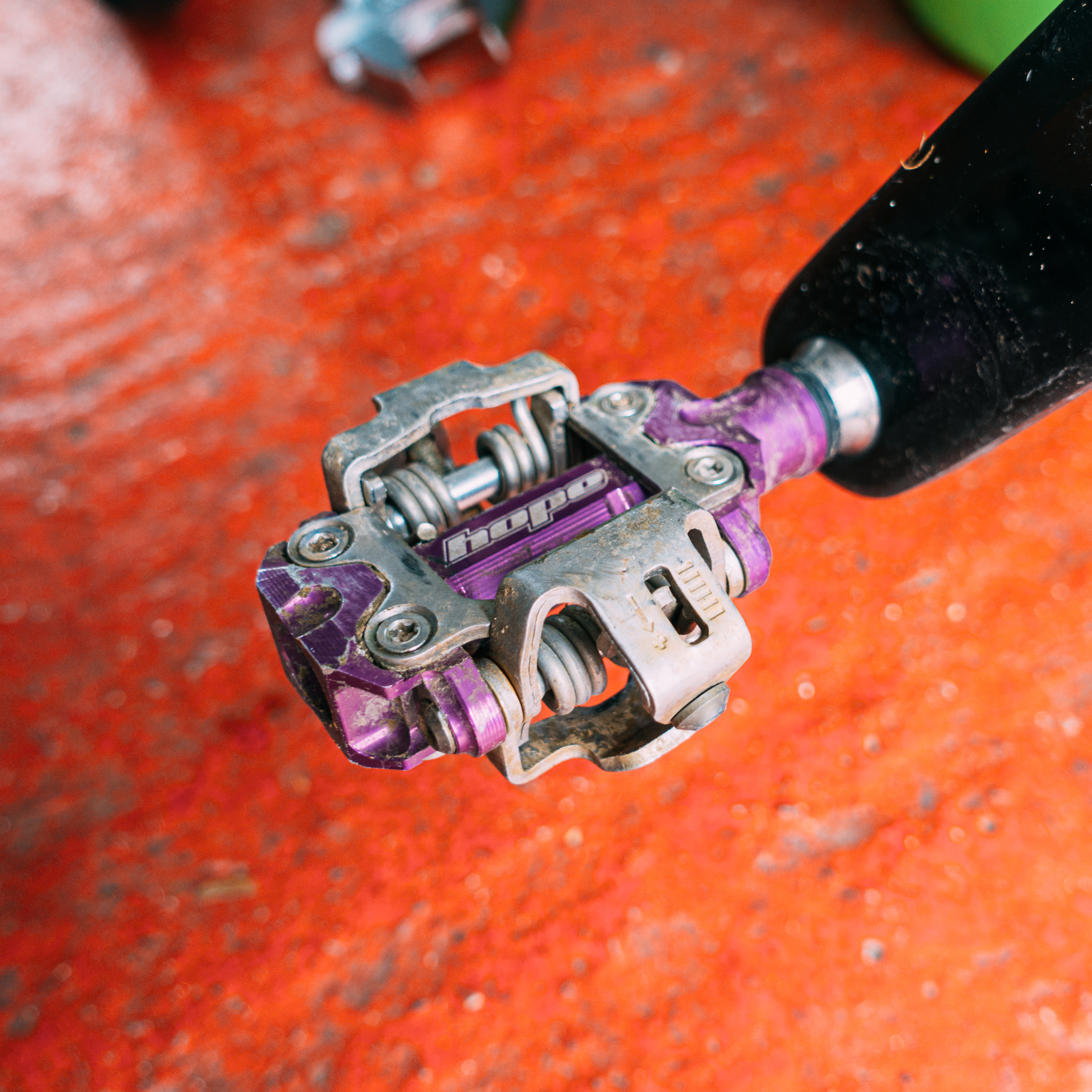
➕ Different float cleats in the box
➕ Beautiful machining
➖ Expensive
➖ Heavier than XTR
Hope is famous for its machining, and the Union RC pedals don't disappoint on that front. Beautifully made, and anodised to pop far more than any other clipless pedal they do resemble normal Shimano SPD options but they do use a proprietary cleat. Two pairs of cleats come in the box offering different floats and release angles, and adjusting the release tension is easier than any other pedal I've tried. The downside is that they do come at a high price, especially considering they are heavier than the cheaper XTR option.
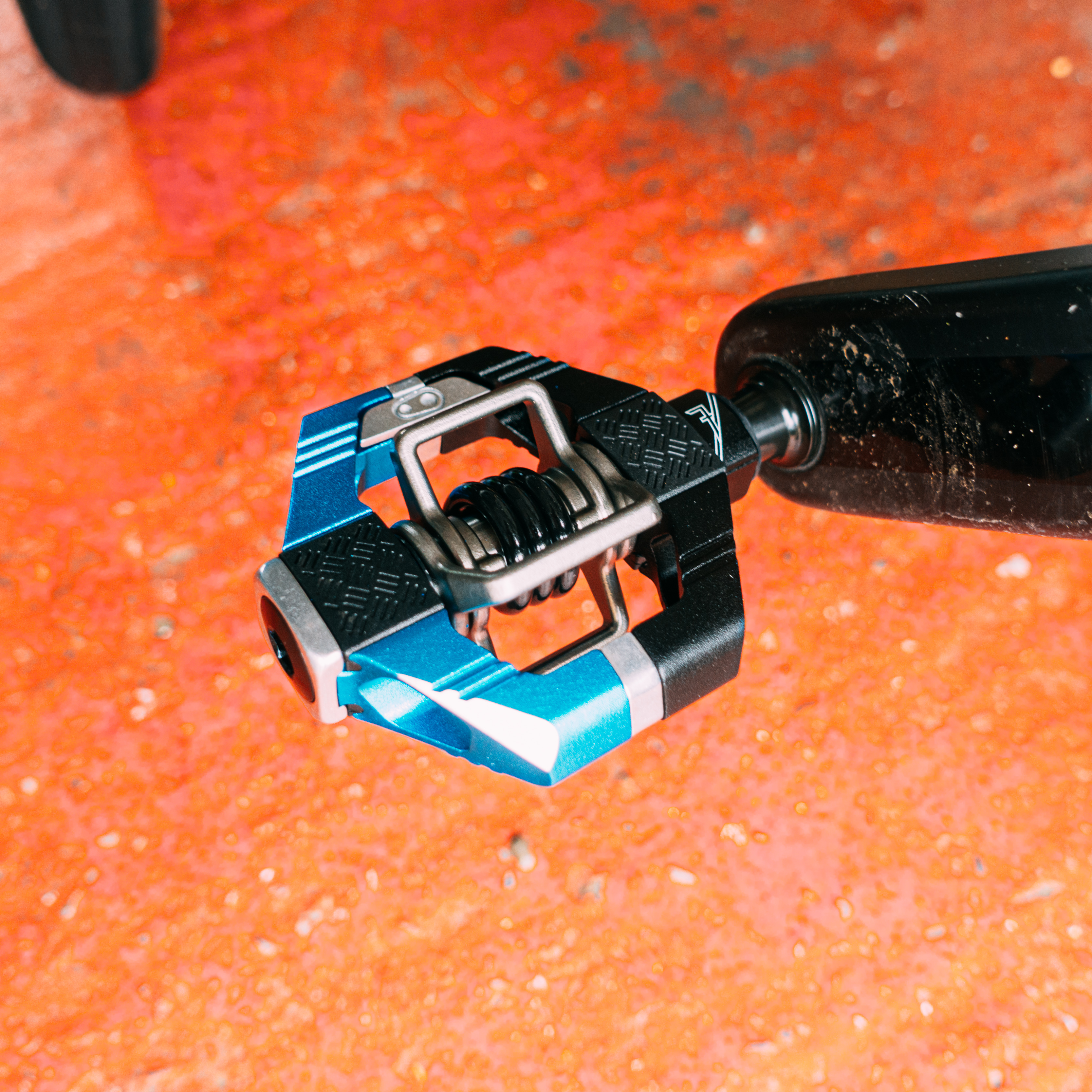
➕ Colourful
➕ Good in the mud
➖ No spring adjustment
The Candy is roughly the same size as the XTR or M520 options above, but if you want a bit more colour, or prefer the feel of a Crankbrothers clip-in, then these are likely going to be your best bet if you find the thought of the Eggbeater a little too skeletal. There's a little more platform to support the sole of your shoe, so lower chance of any hotspots or pressure, and a lot of the same resistance to clogging with mud. There are no pins, unlike the Mallet Trail, so favours the harder soles of gravel shoes.
For more details, read our Crankbrothers Candy 7 pedal review
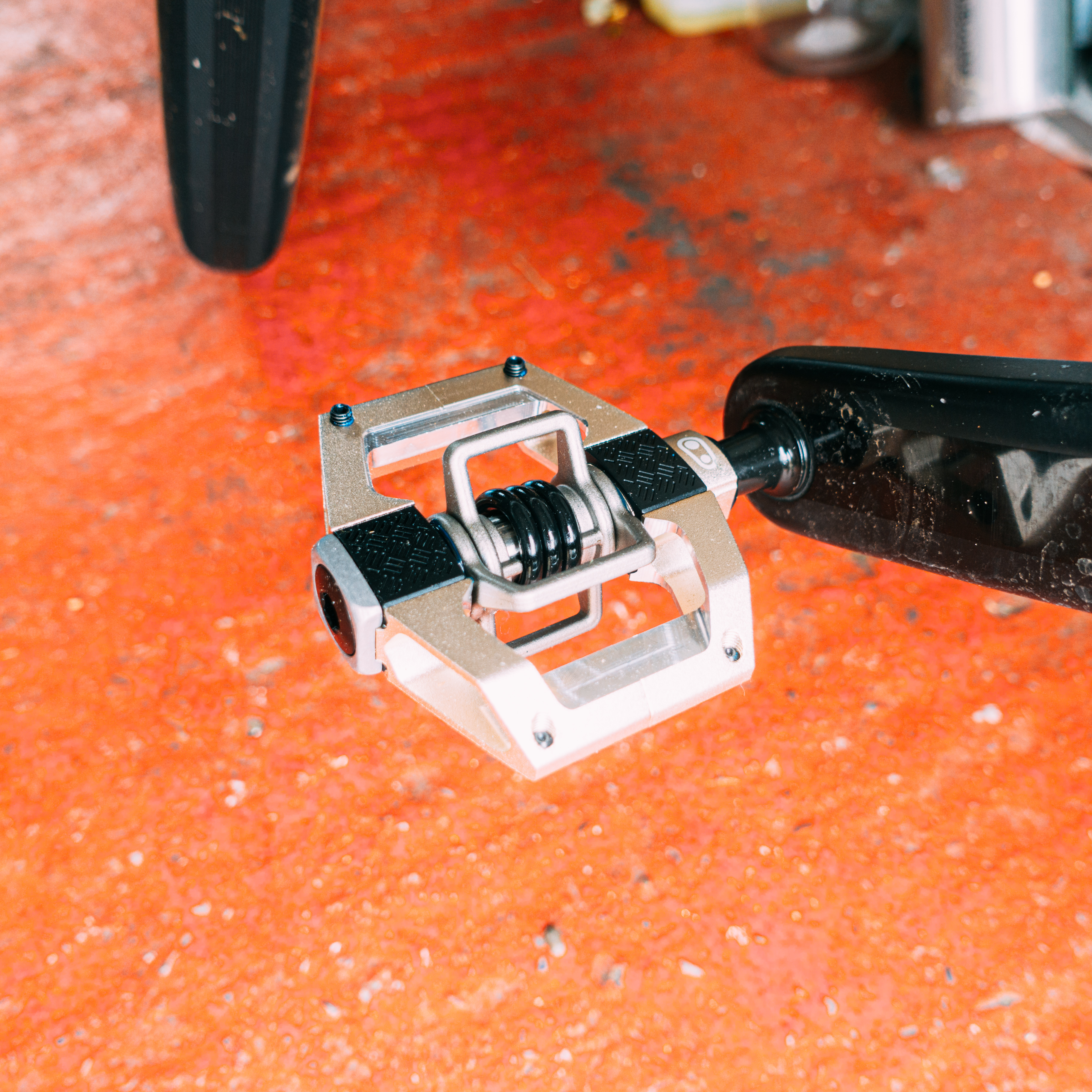
➕ Colourful
➕ Good in the mud
➖ Pins may not play well with gravel shoes
The Mallet Trail is extremely similar to the Candy above but with an even larger platform. The pins at the front add grip, but they definitely work better with softer-soled mountain bike shoes, rather than road-inspired gravel shoes, so if you are torn between these and the Candy then I'd suggest choosing your shoes first and letting that dictate things. The pins at the front are infinitely adjustable in terms of height, and removable, though if you're taking them out you may as well just get the Candy.

➕ Multi-purpose
➕ Relatively inexpensive
➖ Weight penalty over full clipless options
Many people purchase a gravel bike as they can do more than one thing. On-road, off-road, and also commuting. If you use your gravel bike around town, to go to the pub, the shops, or the office it's a pain to have to carry normal shoes with you or use normal shoes on clipless pedals. The PD-EH500 from Shimano features one side with an SPD clip and one side with a flat platform. You lose the dual-sided entry, and the platform isn't as good as any dedicated flat pedal, but you do get the advantage of being able to wear whatever shoes are most convenient.
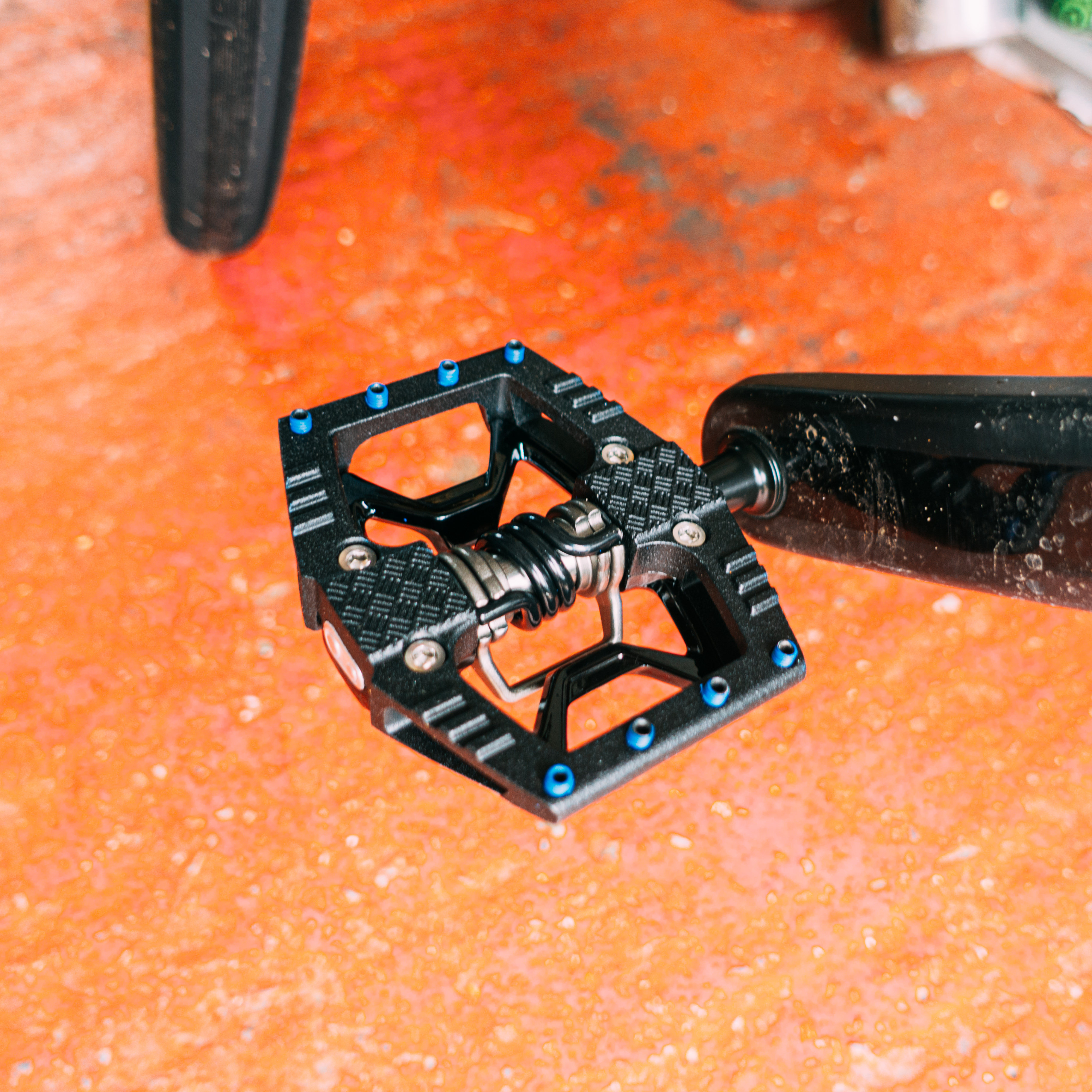
➕ Multi-purpose
➕ Colourful
➖ More expensive than the Shimano option
All the same positives and negatives of the Shimano PD-EH500 also ring true with the Crankbrothers Doubleshot. The thing about clip-in pedal systems is that they lock you into a system, so if you're using Candy, Mallet, or Eggbeater pedals on your other bikes then the Doubleshot should be your go-to reversible option; this is no bad thing though. They're more expensive than the Shimano option but lighter too, and more colourful.
Power meter pedals
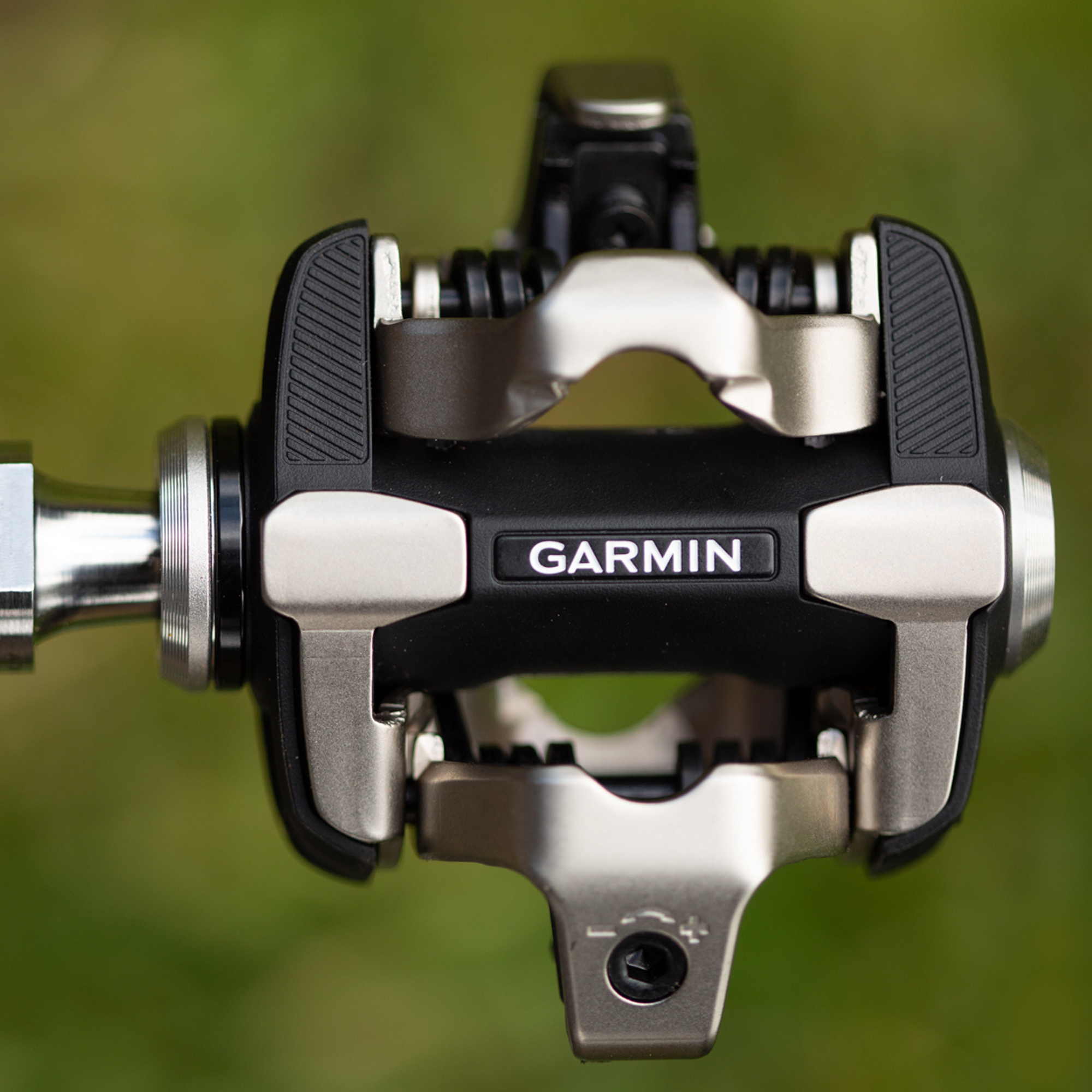
➕ SPD compatible
➕ Swappable to road pedal bodies
➖ Higher stack height than pedal-only options
➖ Coin cell-powered
The Garmin Rally pedal system offers both Look and Shimano-compatible road pedal power meters as well as this dual-sided SPD power meter, with both single and dual-sided meters. The good news is that you can swap formats, although the bodies are pricey and it's a little time-consuming. Rally power meters also run on coin cells rather than being rechargeable. We have a full review of the Garmin Rally power meter system if you want to read more.
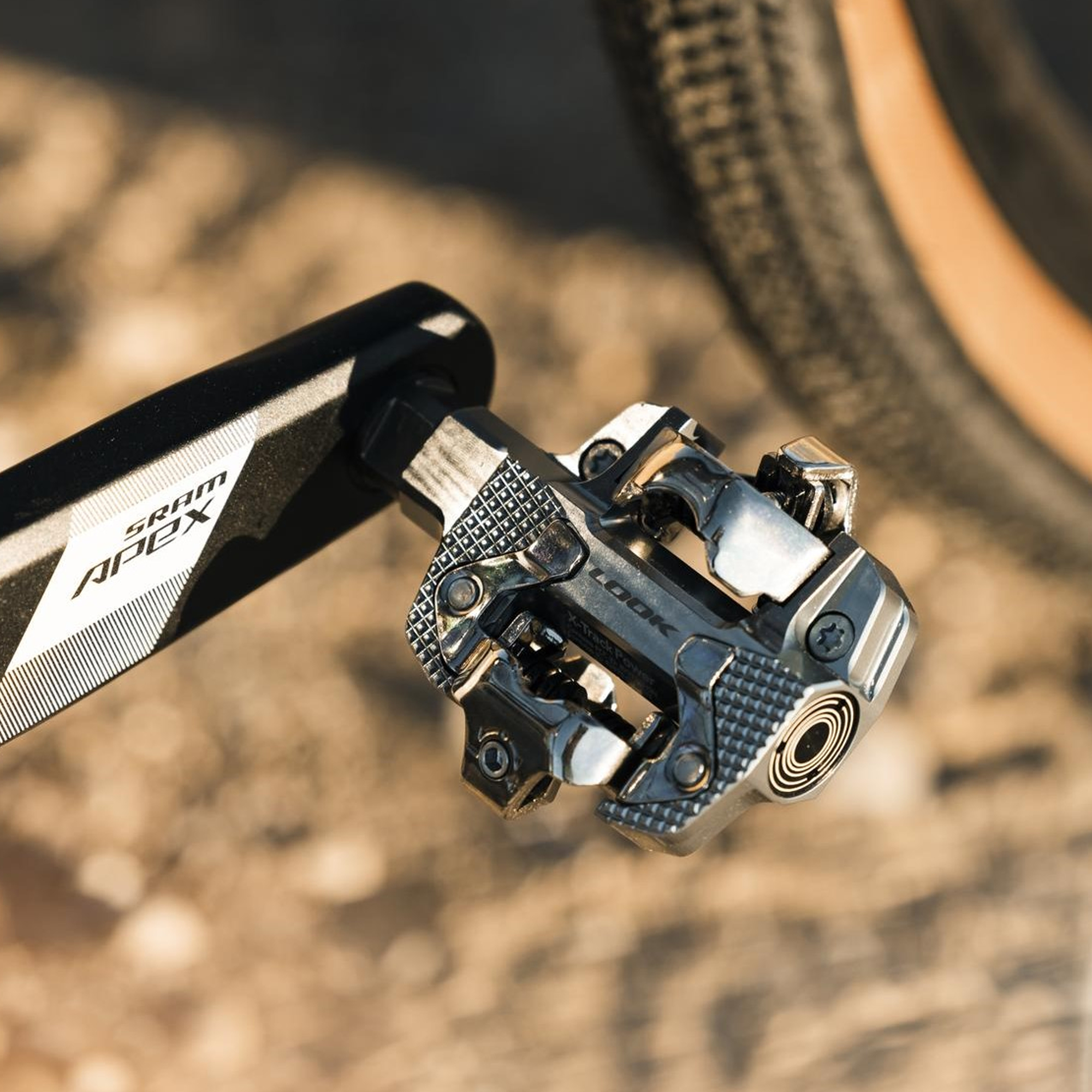
➕ Same stack height as a standard pedal
➕ Rechargeable battery
➖ Steel spindle adds weight
Look's power meter pedals include the X-Track Power, an SPD-compatible option. Look sells single-sided and dual-measuring power meters and the bodies, as with Garmin, are swappable to Keo road platforms. The stack height is the same as the standard X-Track pedal and all the electronics are enclosed in the stainless steel spindle.
For more details, read our Look X-Track Power review
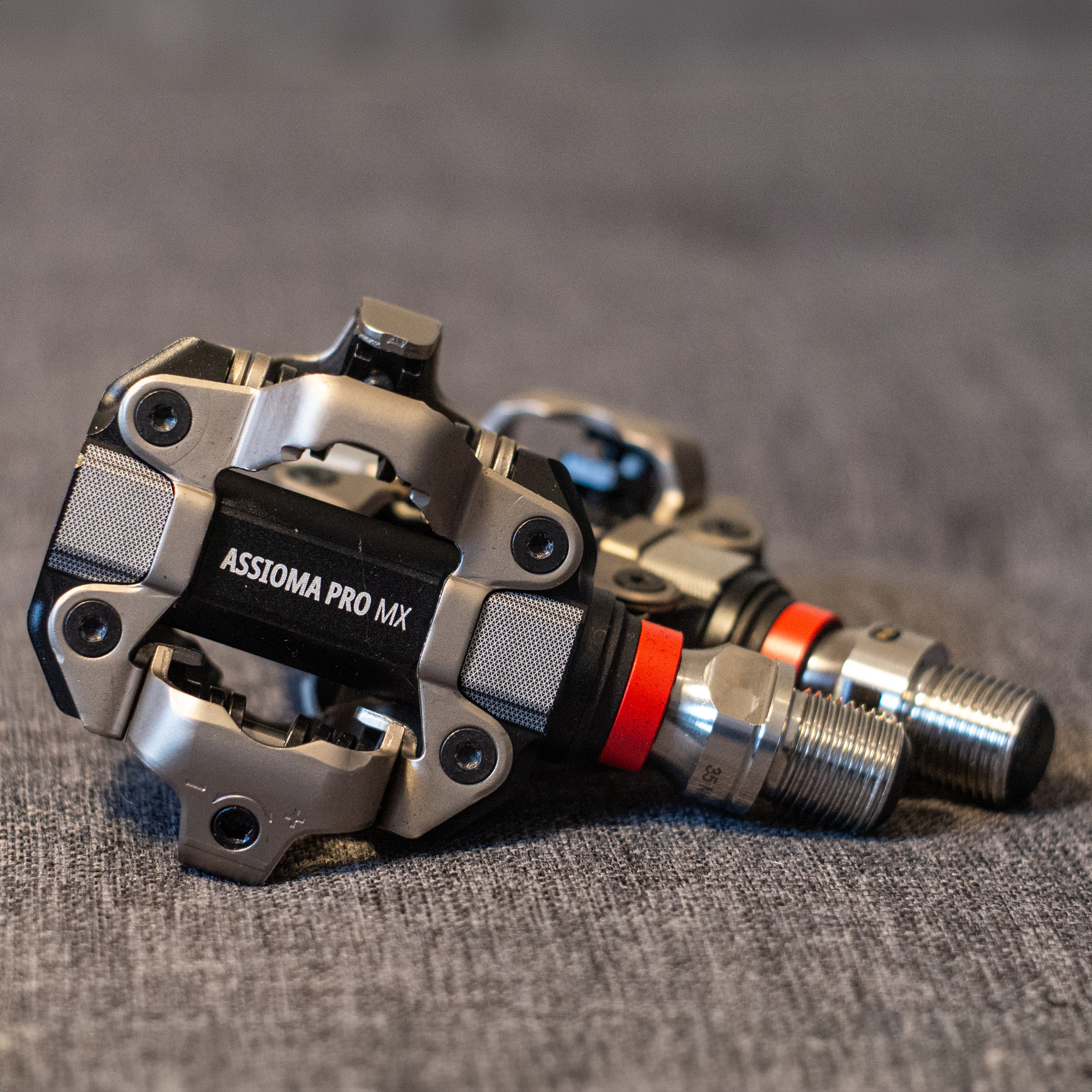
➕ Lower priced than competitors
➕ Internal rechargeable battery
➖ Cleat mechanism isn't as secure
➖ Limited availability except direct from Favero
The Assioma Pro MX encloses the electronics in the axle, rather than having an external pod as with the brand's road pedal power meters. The stack height is low at 11.2mm, there are a slew of metrics and the internal battery has a 60-hour claimed runtime. This is another pedal power meter with a review in the works, but you can read our launch story in the interim. Compared to the competition, Favero's SPD-compatible pedal is low priced too, so a rock strike is a little less painful.
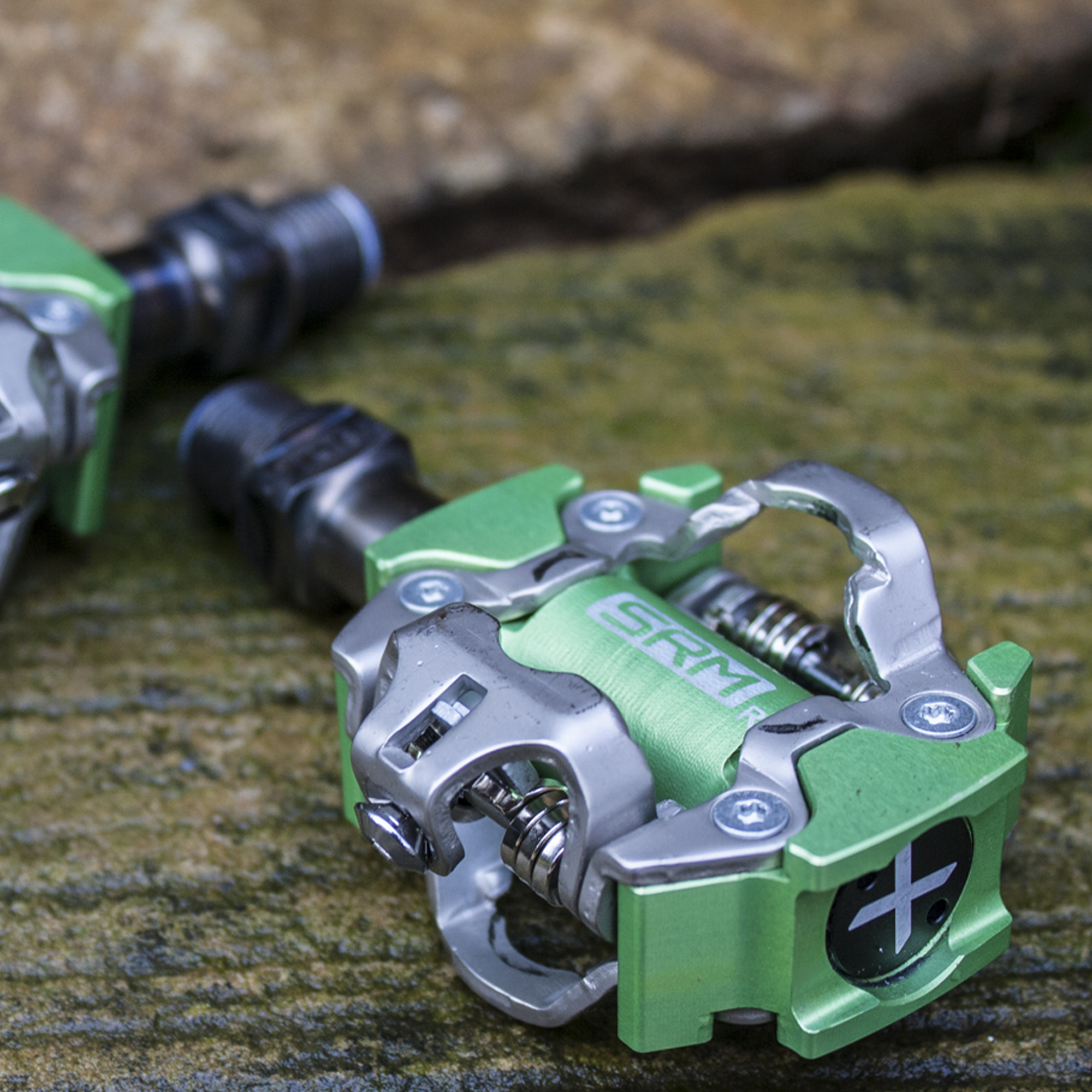
➕ Accurate
➕Low weight and stack
➕ Zwift mode
➖ More expensive than competition
SRM was the original power meter brand, collaborated with Look on power pedals and has now gone it alone with the X-Power, which is available for road and off-road use. The X-Power is lightweight, rechargeable and, again, available in dual or single-sided versions. SRM is a lower volume brand than its competitors and that's reflected in the price.
You can read our early verdict on the SRM X-Power pedals for more.
Flat pedals
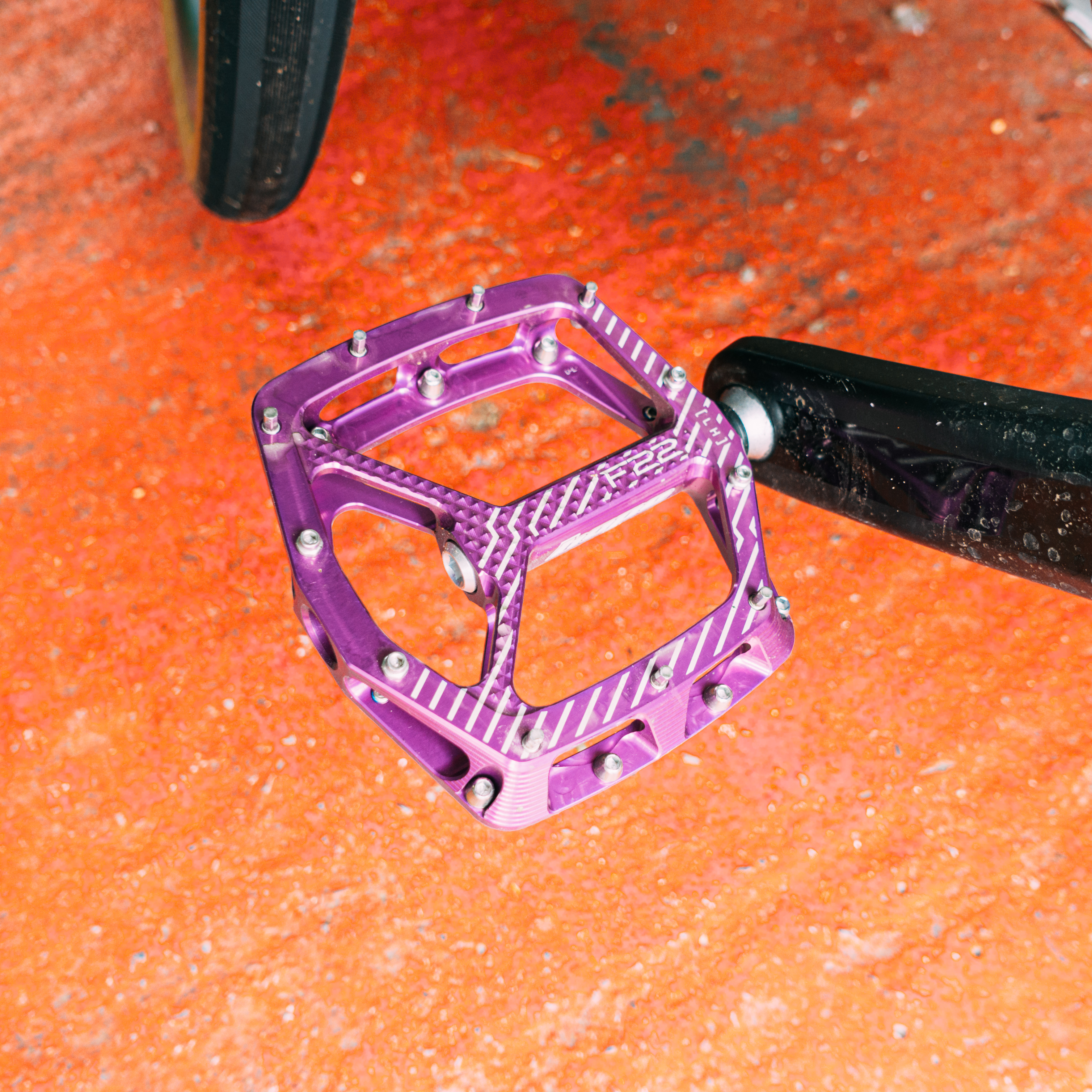
➕ Beautifully machined
➕ Tuneable grip
➖ Pin installation is a real pain
The F22 flat pedal from Hope is a classicly shaped option but machined and anodised so well that it feels more premium than a 'normal' pedal. They're not so large as the Stamp, and definitely not as large as the Catalyst, but if you want an extremely well-built, serviceable option then it's hard to overlook the F22. The pins are tunable with included washers so you can make the grip more or less aggressive, but you do have to install all the pins yourself initially which is a pain and will take you half an hour.
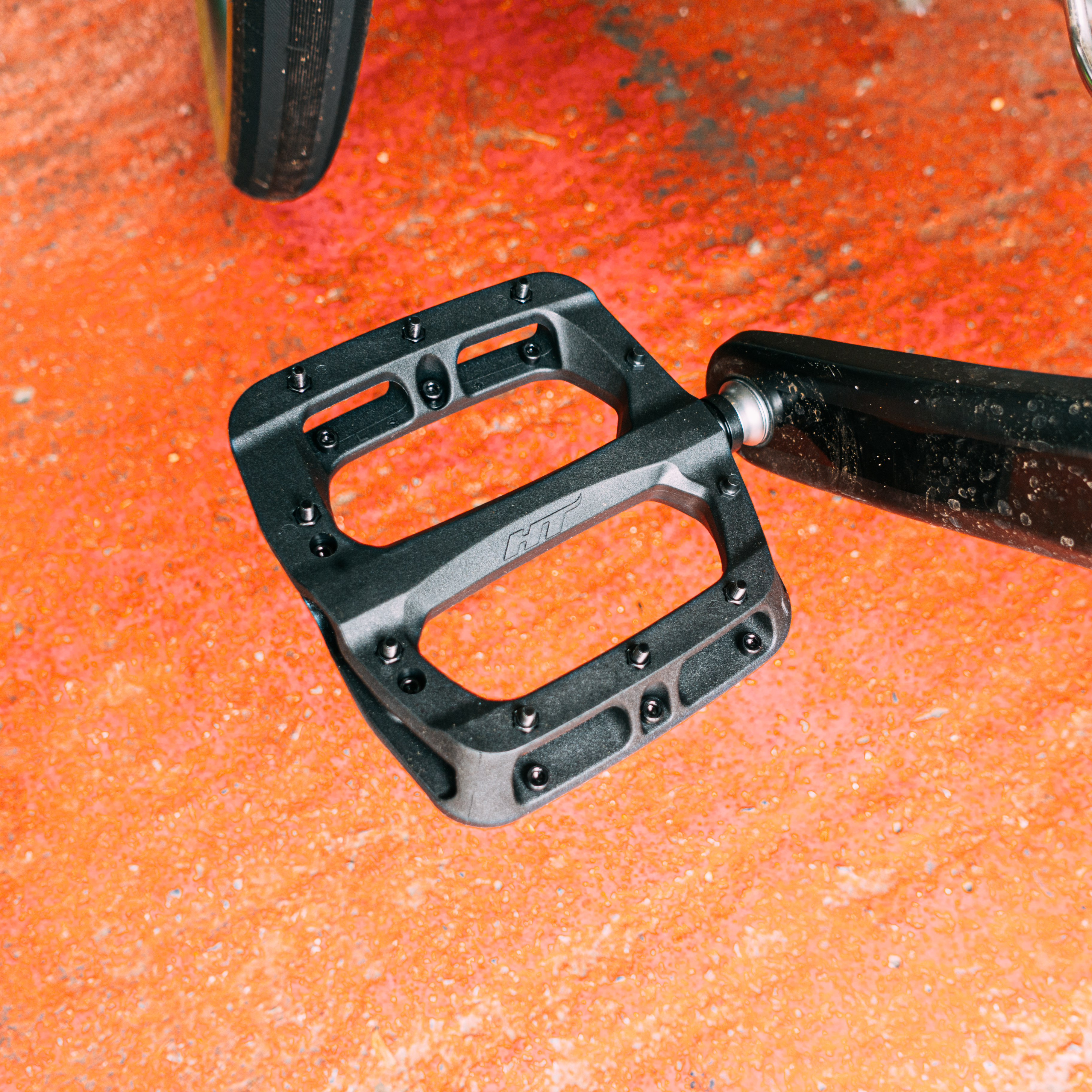
➕ Cheap
➕ Grippy
➖ Not so durable
Considering the price, the HT PA03A pedals are hard to overlook if you're after a set of flat pedals. They may not be as bling as options from the likes of Hope or Crank Brothers, but they are extremely grippy, come in a wide range of colours, and while the nylon body picks up gouges more readily than metal options they have been super reliable in my experience. Unlike some similarly priced flat pedals the pins are replaceable too should you ever lose them, which I never have. The bearings on mine, too, have been faultless after a year or so of use.
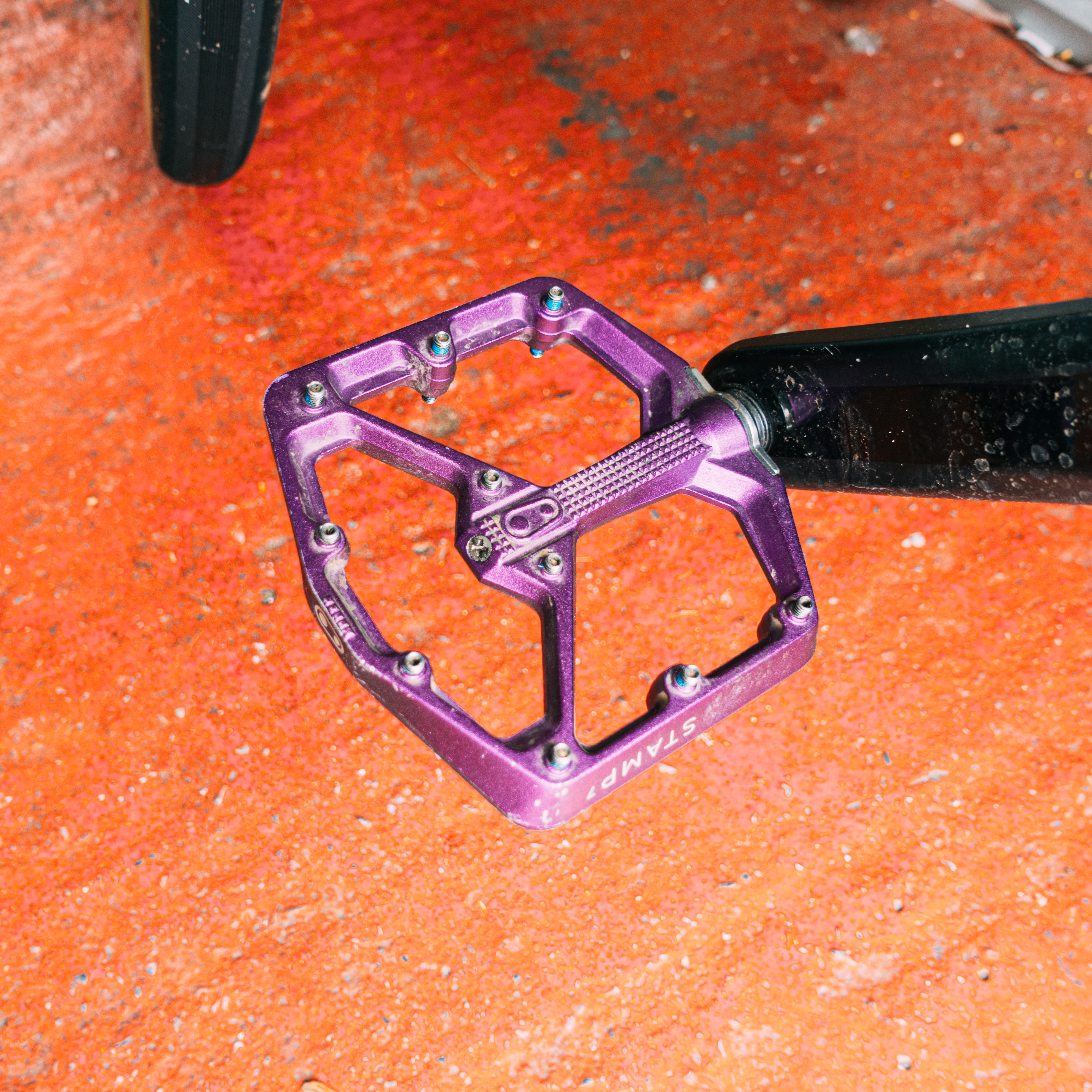
➕ Narrow profile
➕ Large platform
➖ Pricey
The Stamp from Crankbrothers, like the majority of its pedal options, comes in various tiers, though the platform is the same across the board. It's larger than the Hope F22, giving a slightly more assured feeling, but where it differs most is that the Stamp is a more low-profile offering. Gravel bikes can have relatively low bottom bracket heights, so these would be a great option if yours does, or if you're using long crank arms as it'll reduce the risk of pedal strike.
Last updated on 16th of May 2025
Checked the products are still current and available and linked to relevant product reviews. The intro was also rewritten improve readability and made some amendments to the buyers guide format.
How to choose
Still not sure what you want? Maybe the below FAQs will help you out. The first thing to do in any eventuality is to decide whether you want to clip into your pedals or not, and from there, it's finding the system that works best for your needs. As always it helps to be honest with the type of riding you'll be doing; There's no point fitting race pedals to a bike that's going to be used mostly as a commuter, and vice versa.
What kind of pedals do you use on a gravel bike?
Essentially you can use any mountain bike pedal system of your choosing, either clipless or flat. You can technically use road pedals, but I wouldn't advise it as the cleats are much harder to walk in, easier to damage, and the pedals will clog up with muck far more readily. If you want clipless the 'standard' choice is a Shimano SPD system, and you can't go too far wrong whichever tier you opt for. Flat pedals come in various sizes and are more suited to bikepacking and MTB-lite gravel riding. Other clipless systems have other advantages, be that weight, adjustability, or mud clearance.
Do I need clip in pedals for a gravel bike?
Not at all. If you're coming to gravel from the road then you'll likely be used to clipping in, and may well prefer it, in which case there are plenty of pedal options to choose from. However, if you're coming to gravel completely fresh, or from a mountain bike background where you're not used to clipping into your bike then there's no reason you can't use flat pedals. Some riders prefer to use flats for comfort, and the ability to wear normal shoes comes in handy if you have to get off and walk, or if you're using your gravel bike as a commuter and don't want to bring spare shoes with you.
Are gravel bike pedals OK on a road bike?
Yes, absolutely. Many riders, especially on their winter bikes thanks to the increased durability, prefer the dual-sided entry of MTB clipless systems. Anyone who says you can't use MTB pedals on a road bike is almost invariably being a snob; I've got a set on my around-town road bike so I can walk about more easily. Basically, there are a tonne of reasons to use gravelly options on a road bike, so don't let tradition get in your way.
Are flat pedals just as fast as clipless?
The received wisdom is that clipping into your pedals results in a 30% efficiency saving as you can apply power through more of the pedal stroke, and pull up on the pedals too. This isn't something that's been borne out by science, but there is definitely some performance advantage from clipping in, particularly at higher power outputs (think sprinting). If you're aiming to go fast then clipping in will help, but otherwise flat pedals won't hold you back in any real sense.
How much should I spend on gravel bike pedals?
Gravel bike pedals range from tens of pounds up to just shy of £500 for superlight versions of the Eggbeaters (no, really!). Unless you're chasing very small performance gains then there's very little need to spend more than £50-70. XTR pedals, for example, are my favourite and are excellent, but they aren't a huge amount better than a mid-range option in the grand scheme of things considering the price difference.
Do I need a power meter?
For a similar price to the top spec Eggbeaters, you could buy an SPD-compatible, dual-sided pedal power meter. For many gravel bikers, the terrain is more likely to limit their progress than their power output, but if you're into gravel racing, a power meter can be a useful addition to gauge your effort level. It's also really useful for training to assess your fitness level. Metrics such as pedalling smoothness and platform offset can also help you improve your efficiency.
Gravel bike pedal power meters are built robust, so they should be able to withstand grotty conditions and the occasional rock bash, but in a serious wipe-out, pedals tend to hit the ground first, so you need to be happy with the risk of destroying a pricey power meter and the cost involved in replacing it. Fortunately, you can buy spares for all the power meters above.
How do we test the best gravel bike pedals?
Well, mostly by riding them all on gravel. Unlike my coworkers, I don't use a turbo trainer, and ride outside all year round. This means muck, slop, dust, grit, and a lot of hike-a-bike thanks to a bit of strategic underbiking. I get to know which pedals work and which don't, and the pedals in this guide are just a snapshot of all the options I've tried.
The latest race content, interviews, features, reviews and expert buying guides, direct to your inbox!
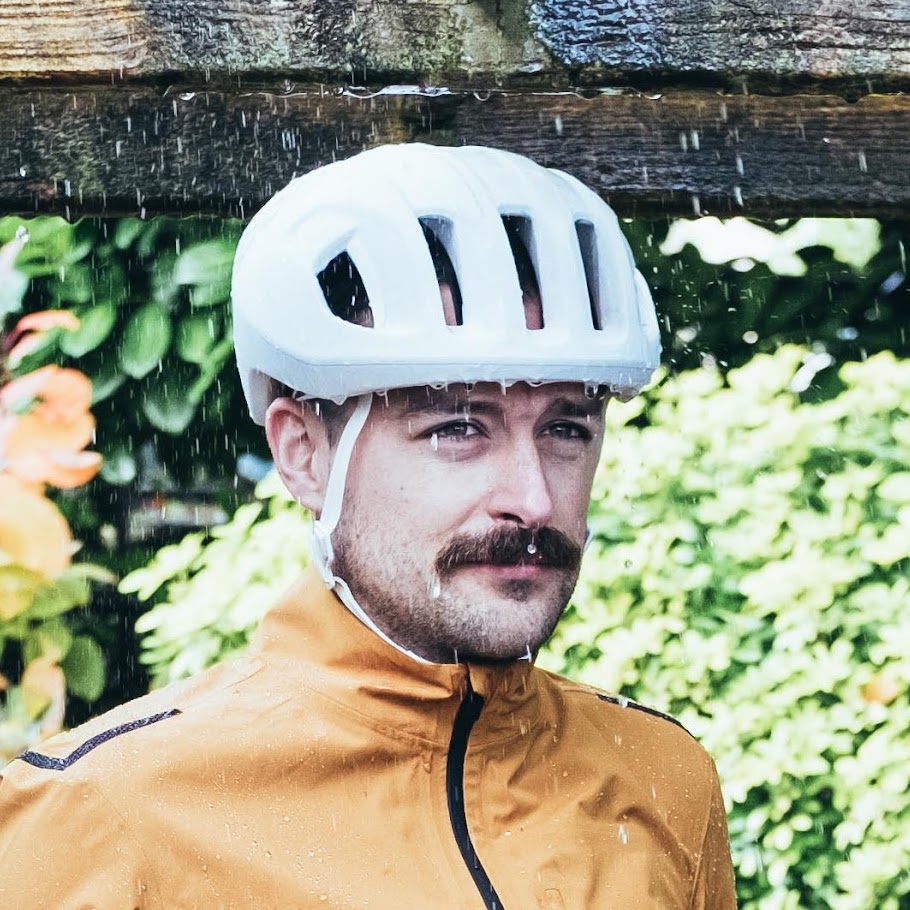
Will joined the Cyclingnews team as a reviews writer in 2022, having previously written for Cyclist, BikeRadar and Advntr. He’s tried his hand at most cycling disciplines, from the standard mix of road, gravel, and mountain bike, to the more unusual like bike polo and tracklocross. He’s made his own bike frames, covered tech news from the biggest races on the planet, and published countless premium galleries thanks to his excellent photographic eye. Also, given he doesn’t ever ride indoors he’s become a real expert on foul-weather riding gear. His collection of bikes is a real smorgasbord, with everything from vintage-style steel tourers through to superlight flat bar hill climb machines.
